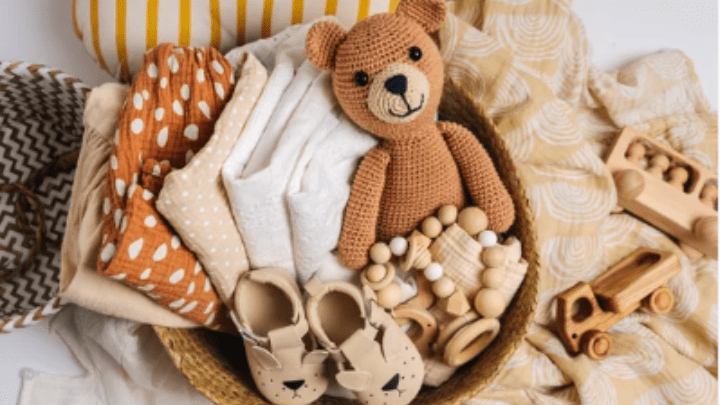Introduction
Hey there, parent-on-the-go! We've got an important topic to discuss today: Car seats. Choosing the right car seat for your child is not a decision to be taken lightly. After all, it's about keeping your little one safe and secure while you're on the road. But with so many options out there, how do you know which one is the safest choice?
Well, fear not! We've got your back. In this article, we'll guide you through the process of choosing the perfect car seat for your child. From understanding the different types of car seats to considering important safety features, we'll break it all down for you. So buckle up and get ready to navigate the world of car seats with confidence!
Types of Car Seats: Infant, Convertible, Booster
When it comes to choosing the safest car seat for your child, it's important to understand the different types available. There are three main types of car seats: infant car seats, convertible car seats, and booster seats.
Infant car seats are specifically designed for newborns and young infants. They are rear-facing and provide proper support for a baby's head, neck, and spine. These seats typically have a detachable carrier that can be easily removed from the base, making it convenient to transport your baby in and out of the car.
Convertible car seats are designed to accommodate both infants and older children. They can be used in a rear-facing position for infants and then converted to a forward-facing position as your child grows. This type of seat offers extended use and may have additional safety features like adjustable headrests and side impact protection.
Booster seats are intended for older children who have outgrown their convertible car seat but are not yet tall enough to properly fit in an adult seat belt. Booster seats elevate your child so that the lap belt fits across their upper thighs rather than their abdomen, reducing the risk of injury in case of an accident.
It's important to choose a car seat that is appropriate for your child's age, weight, and height. Always check the manufacturer's guidelines to ensure you are using the correct type of seat for your child's specific needs. Remember, safety should always be the top priority when selecting a car seat for your little one.
Installing Your Child's Car Seat Correctly
Installing your child's car seat correctly is crucial for their safety while travelling. Here are some key steps to follow when installing a car seat:
- Read the Manual: Before beginning the installation, carefully read the instruction manual provided by the car seat manufacturer. Each car seat may have specific installation requirements and guidelines.
- Choose the Right Location: The safest place for a child's car seat is in the back seat of the vehicle. The middle seat is generally considered the safest as it provides additional protection from side impact collisions.
- Use the Correct Method: There are different methods of installing car seats depending on your child's age and weight. Make sure you are using the correct method, whether it be rear-facing, forward-facing, or booster seat installation.
- Securely Fasten: Ensure that the car seat is securely fastened to the vehicle using either the vehicle's seat belt or LATCH system (Lower Anchors and Tethers for Children). Follow the manufacturer's instructions on how to properly secure and tighten these restraints.
- Check for Movement: Once installed, check for any excessive movement in the car seat. It should be tightly secured with minimal wiggle room. If there is any looseness or wobbling, adjust and resecure as necessary.
- Harness Adjustment: Adjust the harness straps according to your child's size and weight. The harness should fit snugly against their body, with no slack that could lead to injury during a collision.
- Seek Professional Assistance if Needed: If you are unsure about how to properly instal your child's car seat, don't hesitate to seek assistance from a certified Child Passenger Safety Technician (CPST). They can provide guidance and ensure that everything is correctly installed for maximum
Choosing the Right Car Seat Size for Your Child's Age and Size
Choosing the right car seat size for your child is crucial to ensure their safety while travelling in a vehicle. One of the key factors to consider when selecting a car seat is your child's age and size. Here are some important guidelines to follow:
### Rear-Facing Seats
For infants and young toddlers, a rear-facing car seat is the safest option. It provides optimal support for their neck and spine in the event of a collision. It is recommended to keep your child in a rear-facing seat until they reach the maximum height and weight limits specified by the car seat manufacturer.
### Forward-Facing Seats
Once your child outgrows the rear-facing seat, you can transition them to a forward-facing car seat. These seats are designed to protect the child's head, neck, and spine in a forward-facing position. It is important to choose a seat that has a five-point harness system and adjust it to fit snugly on your child. Keep your child in a forward-facing seat until they reach the height and weight limits specified by the manufacturer.
### Booster Seats
As your child grows and becomes too big for a forward-facing seat, a booster seat is the next step. Booster seats help position the seat belt correctly on your child's body, ensuring maximum safety. It is recommended to use a booster seat until your child reaches a height of 4 feet 9 inches and can properly fit in an adult seat belt.
Remember, it is essential to always read the car seat manufacturer's guidelines and follow the specific recommendations for your child's age and size. Regularly check the car seat for any signs of wear and tear and replace it if necessary. By choosing the right car seat size, you are taking a significant step towards ensuring your child's safety on the road.
Additional Car Seat Safety Features to Consider
When choosing a car seat for your child, it's important to consider additional safety features that can provide extra protection and peace of mind. Here are some features to keep in mind:
- Side-Impact Protection: Look for car seats that have additional padding and energy-absorbing materials on the sides. This can help protect your child in the event of a side-impact collision.
- Adjustable Headrest and Harness: A car seat with an adjustable headrest and harness allows you to customise the fit as your child grows. This ensures that the seat provides optimal protection and comfort at every stage.
- LATCH System: The Lower Anchors and Tethers for Children (LATCH) system provides an easier and more secure installation of the car seat. Look for car seats that have LATCH connectors for a hassle-free installation process.
- Anti-Rebound Bar: Some car seats come with an anti-rebound bar, which is a sturdy bar that attaches to the back of the seat. This feature helps prevent excessive movement and rotation of the car seat in the event of a crash.
- Built-in Lock-offs: Car seats with built-in lock-offs make it easier to achieve a secure installation by preventing the seatbelt from loosening. This ensures that the car seat remains tightly in place during travel.
By considering these additional safety features, you can choose a car seat that provides maximum protection for your child on the road. Remember to always follow the manufacturer's instructions and guidelines for proper installation and use of the car seat.
Conclusion
To ensure the safety of your child, choosing the right car seat is crucial. Remember, safety should always be the top priority. Look for car seats that meet the highest safety standards and have been tested rigorously. Consider factors such as the age and size of your child, as well as the type of car seat that best suits your needs.
When it comes to car seats, one size does not fit all. Take the time to research and compare different options, read reviews, and consult with experts if needed. Don't forget to properly install the car seat and follow the manufacturer's instructions for maximum safety.
Investing in a high-quality, safe car seat is an investment in your child's well-being. By making an informed decision and prioritising safety, you can have peace of mind knowing that your child is protected while on the road. So, buckle up and choose the best car seat for your little one!



